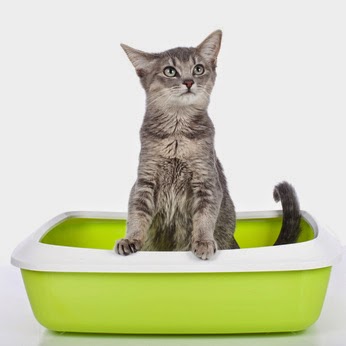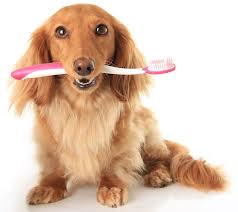Saving Money Without Shortchanging Your Pet
Dr. Marty Becker, America's Veterinarian
 Dr. Marty Becker is America's Veterinarian and a Veterinary Correspondent for Animal Radio, reporting on important stories from the world of all things furry. This week, Dr. Becker discusses how to save money on veterinarian bills without shortchanging your pet. So how do you do this?
Dr. Marty Becker is America's Veterinarian and a Veterinary Correspondent for Animal Radio, reporting on important stories from the world of all things furry. This week, Dr. Becker discusses how to save money on veterinarian bills without shortchanging your pet. So how do you do this?
With all of the new technology and great advances in the veterinarian world, it is not a surprise that along with it comes an increased cost. So how do you get all of the procedures your pet needs at an affordable price?
Dr. Becker informs us that he personally has pet insurance for all of his pets. People are surprised when he says this, as he is considered upper-middle class and is a veterinarian. In fact, a survey shows that about 7-percent of veterinarians do carry pet insurance on their own pets. Why do they have this coverage themselves? Because, for example, if you are looking for a kidney transplant for a cat, you can expect to spend around $30,000. Surprisingly, there is even a waiting list for kidney transplants at this time. Even just complicated orthopedic surgeries can run anywhere from $10,000 to $15,000. And if you need to visit a cancer specialist, like the Animal Cancer Center in Colorado, you can easily spend $10,000 to $20,000.
But what about an animal that is just suffering from old age? While many veterinarians and pet owners feel that glucosamine and chondroitin work, Dr. Becker is not a believer, and he says the studies back him up. He suggests that you try a non-steroidal, anti-inflammatory drug or even class 4-laser therapy, all the way up to stem cell therapy, which can be expensive. So what do you do? You know your pet and what your financial situation is. You shouldn't go off the deep end chasing a cure that is not going to happen. An elderly pet is in their last chapter of their life. Can you afford to go into debt to spend $5,000 for stem cell therapy? If you are the type of person who feels this pet is your child or a part of the family and can afford it, go for it! No one is going to criticize you if you do or don't.
If you have pet insurance, most of them will cover stem cell therapy, chemotherapy and even artificial hips. But beware; pet insurance is not like human health insurance. It is more like insurance you would have on your home or car. There are many variables on how they pay and on what pay schedule they pay. Some of them have caps and some of them don't cover pre-existing conditions. Just do your homework and compare pet insurances before you purchase any, as they are all not the same.
 If you want to give your pet everything you can and "Save Money Without Shortchanging Your Pets," keep your pet at its ideal body weight (ask your vet what they feed their pets); bathe your pets weekly (this can help with skin infections); keep your pets on a flea and parasite prevention medication year-round (ask your vet what they use); and daily oral care. We know that you are not going to brush your pet's teeth every day, but find something that has been clinically proven to reduce plaque and tartar.
If you want to give your pet everything you can and "Save Money Without Shortchanging Your Pets," keep your pet at its ideal body weight (ask your vet what they feed their pets); bathe your pets weekly (this can help with skin infections); keep your pets on a flea and parasite prevention medication year-round (ask your vet what they use); and daily oral care. We know that you are not going to brush your pet's teeth every day, but find something that has been clinically proven to reduce plaque and tartar.
You can also save money by purchasing all of these items online at reduced rates. However, you can also ask your vet if they can beat or match the online prices. This way, these items will end up in your pet's medical records for future reference.
Visit Fear Free Happy Homes for tips on making your home fear free and to locate a Fear Free Veterinarian near you. Go to Fear Free Pets to become certified.
Listen and Explore the Fear Free Expert Series
How To Build The Perfect Litter Box - Dr. Debbie
 One sniff upon entering your home and you recognize the unmistakable odor of cat urine and feces. Simba has used your entry hall as his litter box again. But before you lose your temper - stop. By scrutinizing the environment through your cat's eyes, you will likely discover the cause of his toileting mishaps.
One sniff upon entering your home and you recognize the unmistakable odor of cat urine and feces. Simba has used your entry hall as his litter box again. But before you lose your temper - stop. By scrutinizing the environment through your cat's eyes, you will likely discover the cause of his toileting mishaps.
Elimination issues are a main reason for veterinary visits and a primary reason for relinquishment of cats at shelters. House soiling problems can be multi-factorial, with an overlap of behavioral, environmental and medical causes. Feline house soiling can be managed however with sleuth work and patience. The challenge is to think like a cat.
First and foremost, say this and repeat it…"My cat does not eliminate out of the litter box to get even with me." Cats do use urine and fecal scent marks to communicate territory, but this isn't done with spite or in effort to "get even" with you. Inappropriate elimination is a cat's way stating that something isn't right in their world. Understanding this is key before tackling feline house soiling. Focus on what's wrong in Simba's toilet area, not on how the house soiling makes you feel.
Start With a Vet Check
Cat owners often struggle with house soiling mishaps for months or years before enlisting help from their veterinarian. But seeing the veterinarian should be the first step, since health disorders may be at the root of some house soiling issues. Your efforts in restoring litter box usage will be doomed if an underlying medical cause is not addressed at the same time.
Size Does Matter
Make sure your cat's litter box is of adequate size to allow maneuvering. Litter box size should be one and a half times the length of cat's body length. Height of the edge also matters. For older kitties, try lower profile litter boxes or plastic under bed storage boxes. An arthritic older cat won't complain or cry in pain with arthritis, she'll just chose to eliminate elsewhere.
Consider the View
Cats don't want to be startled while in the loo. Don't place the litter box in a high traffic area where people and pets are always a-coming and going. Cats prefer a low traffic area where they can have an eye out on things.
Don't place the litter box near appliances which give off noise, vibration and heat, all which disturb your cat while eliminating. Once a negative aversion is created, your cat may not return to use that box in the future.
Ditch the Litter Box Cover
While some nervous kitties prefer the privacy of litter box covers, the majority of cats dislike the tight quarters and limited ventilation litter box covers provide. Consider how you feel in a public porta-potty... do you like to touch the walls when inside? Sure, people like the way the lid contains odors, but does it really matter how little odor comes from the litter box when your cat is pooping on your oriental rug?
Provide More Than One Box
A common error is assuming that one litter box is all your cat needs. What cat owner loves the litter box, and relishes seeing more of them in the home? But the more the better when it comes to faithful litter box usage, especially with multiple cats. The general rule is to provide one more box than the number of cats. Some cats share litter boxes, others will not. Unless you provide alternate sites you may have elimination issues in multiple cat homes.
 Another special consideration is differences in cat's personalities- timid cats may avoid crossing paths with other more assertive pets in home. Be sure to provide litter box sites that won't be blocked by other animal's movements.
Another special consideration is differences in cat's personalities- timid cats may avoid crossing paths with other more assertive pets in home. Be sure to provide litter box sites that won't be blocked by other animal's movements.
If you live in a multilevel home- you must provide litter box sites on each level. This is especially important in multi-cat homes, those with senior cats or those with health conditions.
The Pick of Litters
Litter texture preferences vary and there are many choices from scoopable, clay, crystals, or natural litters. However in one research study of cat's litter box habits, it demonstrated that the majority of cats prefer fine grained scoopable clay based litters that have carbon as their odor absorbing ingredient. Every cat is different though, so try other litter varieties until you find your cat's preference.
Skip the Scents
The verdict is still out on what odors cats prefer, but avoid heavily scented litters or deodorizers if your cat is missing the box. Interestingly enough, one study showed cats preferred cedar and fish odors, while avoiding citrus and floral scents, while another study concluded cats preferred fish or bleach smells to other scents.
Kitty Litter Depth
Ideal litter depth is 2 inches- more isn't always better. Some cats thrive on scratching the bottom of the pan, which is obscured by excessive amounts of litter.
Keep It Clean
Cats are fastidious by nature and will avoid using a soiled or smelly box. The overall cleaning frequency depends on the number of cats in the home. General advice is to scoop twice a day and deep clean the litter pan weekly. Change out clumping litter every 2-3 weeks.
Build It and Kitty Will Use It
By building your cat's dream litter box, your cat will find litter box nirvana. And you'll come to enjoy a better relationship with your kitty family members without those unwanted "presents" in the foyer.
Featured veterinarian known as "Dr. Debbie" on national pet radio program, Animal Radio. Ebook author of "Yorkshire Terriers: How to Be Your Dog's Best Friend"; "Pugs: How to Be Your Dog's Best Friend"; "Mini Schnauzers: How to Be Your Dog's Best Friend"; and "Shih Tzu: How to Be Your Dog's Best Friend." Dr. Debbie's books.
Visit Website
The Dogfather's Grooming Tip with Joey Villani
 Don't Neglect Your Pet's Teeth
Don't Neglect Your Pet's Teeth
Hygiene has to do with beauty and grooming. So, don't neglect your pet's teeth. More than 50-percent of Joey's clients have some sort of decay by around five years of age, where you start to see the tartar buildup. If you can't see their bad teeth, then you might notice that they have extremely bad breath.
If your groomer does teeth scaling, run away and don't turn around! This is something that should ONLY be done by a licensed veterinarian. A groomer should not do this, and in most states, it is illegal for anyone but a veterinarian.
If the decay is heavy, go to a veterinarian and have the teeth cleaned and extractions done if necessary. Don't be alarmed when you hear the word extraction, because if the tooth is that bad, it can poison your dog's system with bacteria and make them unhealthy and sick. The best thing to do is to get rid of the tooth, which will get rid of the bacteria. Now you can start with a clean slate.
Unfortunately, when most people get their pet's teeth cleaned, they don't do anything further. For a dog that has any type of periodontal disease, it can come back very quickly, sometimes even in four to six months and they might need another cleaning.
After your dog's teeth have been cleaned, asked your veterinarian for chlorhexidine wipes to keep their teeth clean. You can also go to your local pet store for some enzymatic tooth cleaning gels, sprays or toothbrushes. It is sometimes hard to brush our dog's teeth, so you can use additives in their water or spray the gel on their teeth, both of which are easy to do. These products work very well and can even take dirty teeth and make them look clean in a few months. But you need to start with clean teeth done by your veterinarian.
 But what about food to clean your dog's teeth? It is a myth that feeding your dog dry food as opposed to wet will keep their teeth clean longer. A study was done which showed that there were no signs that dry dog food will keep your dog's teeth any cleaner than canned food.
But what about food to clean your dog's teeth? It is a myth that feeding your dog dry food as opposed to wet will keep their teeth clean longer. A study was done which showed that there were no signs that dry dog food will keep your dog's teeth any cleaner than canned food.
What about chew bones? While they won't clean your dog's teeth, they will help keep them clean if your dog chews on them on a regular basis, and they have clean teeth to start with.
Unfortunately, whether or not your dog has good teeth is hereditary. Your dog might be pre-disposed to having genetic problems with their teeth and gums. This is also more of a problem with small dogs because of the lack of space between their teeth and their shallow jawbones.
But with proper care, your dog can have clean teeth and fresh breath!
Animal Radio News with Stacey Cohen
 Lindbergh Field Installed Country's First "Pooch Potties"
Lindbergh Field Installed Country's First "Pooch Potties"
Lindbergh Field in San Diego installed what could be called the country's first airport "pooch potties." Officials included four fancy "Pet Relief" stations as part of their billion-dollar expansion. The 75-foot square spaces have fake grass and a fire hydrant, along with deodorizers, a hand washing station and complimentary baggies for clean up. The space complies with the TSA requirement that airports have pet relief areas. The only drawback is that travelers who use them must leave the terminals and go through a second security check to get back in.
Ever Suspected Your Husband Secretly Loves The DOG More Than You?
It's pretty rare that you get definitive proof like THIS. Graham Anley and his wife Cheryl, from South Africa, were on a sailing trip all the way up to Madagascar. It was just the two of them and their nine-year-old Jack Russell terrier Rosie for three months. But as they were sailing near the coast on the east side of South Africa, they hit rough water and their yacht capsized. As Graham swam to shore, he decided to rescue the dog. Then, after he got Rosie safely on dry land, he swam back to get his wife. A rescue helicopter picked them up and all three ended up okay, although the boat was ruined. Graham hasn't said why he grabbed Rosie before his wife, although we're thinking it's because terriers aren't great swimmers and his wife was probably much better?
 Is It A Turtle Or A Kentucky Fried Chicken Sandwich?
Is It A Turtle Or A Kentucky Fried Chicken Sandwich?
A Chinese man is now traveling without his pet turtle after supposedly trying to trick airport security into thinking the reptile was a Kentucky Fried Chicken sandwich. The man was going through airport security in Guangzhou when the x-ray operator noticed an "odd protrusion" sticking out of the sandwich in his bag. The security team eventually uncovered the turtle and lectured the owner on why he wasn't allowed to smuggle his four-legged friend on the plane. He explained that he was only trying to bring his beloved turtle along for the trip, but ultimately agreed to keep the little guy with a friend while he was away.
Junk Food Lures Escaped Chimpanzees
It turns out even chimpanzees have a hard time turning down junk food. Officials at England's Twycross Zoo were able to lure a group of wandering chimps out of a secure service area using "ice cream and fizzy drinks." Zookeepers said the public was never in danger during the incident, but safety procedures forced them to close the zoo down anyway. However, less than two hours later, the chimps were back in their normal enclosure. The zoo's statement said the animals were all fine, although they were a "little excited" after having ice cream and soda for breakfast.
 Death Threats After Animal Shelter Killed Baby Deer
Death Threats After Animal Shelter Killed Baby Deer
Wisconsin Department of Natural Resources officials said they had received threats after the death of a baby deer named Giggles. The deer was killed after a raid at a Kenosha County animal shelter. The white tailed deer was being kept illegally and the shelter had failed to comply with its requests, leaving them no other choice. The story sparked national outrage.
 Listen to the entire Podcast of this show (#1336)
Listen to the entire Podcast of this show (#1336)





